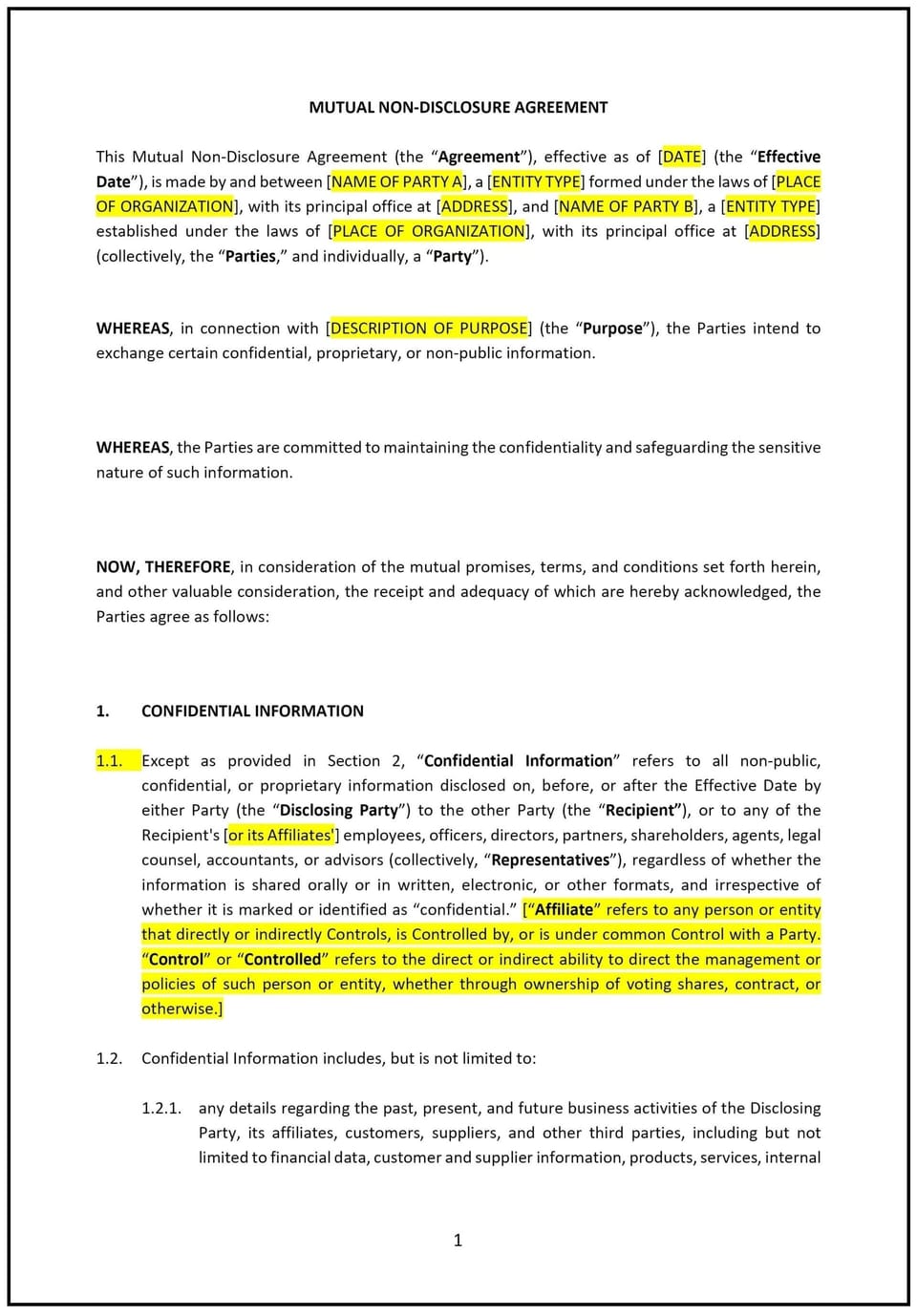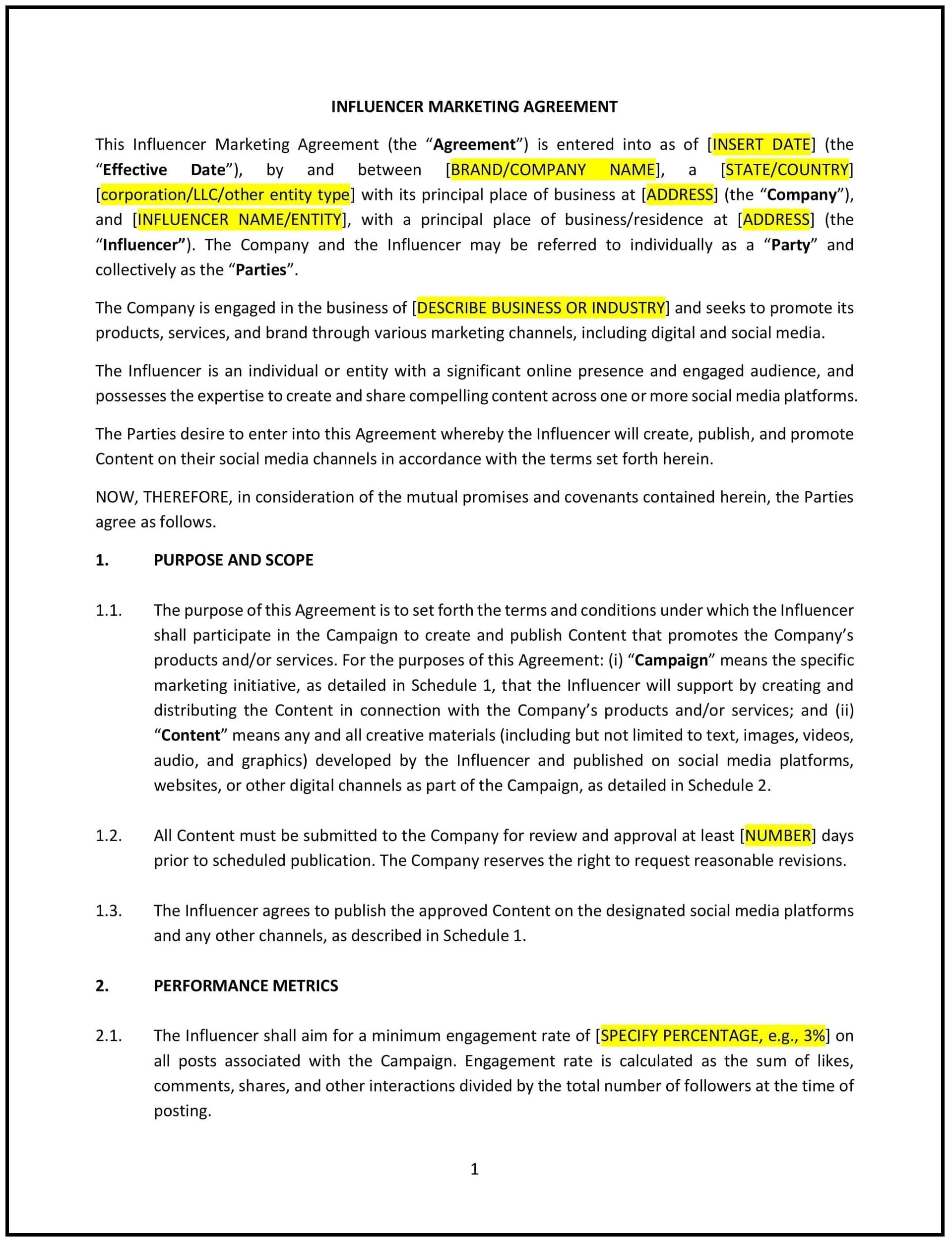Non-Disclosure Agreement (Mutual) (Alaska): Free template

Non-Disclosure Agreement (Mutual) (Alaska)
A Non-Disclosure Agreement (Mutual) in Alaska is a contract that ensures both parties keep shared confidential information private. This agreement is commonly used in business negotiations, partnerships, and collaborations where sensitive information, such as trade secrets, financial data, or proprietary technology, is exchanged between parties.
Businesses in Alaska use this agreement to protect valuable business information and maintain trust between parties. It helps prevent unauthorized disclosures and provides legal recourse if confidential information is misused.
Tips for drafting and maintaining a Non-Disclosure Agreement (Mutual) in Alaska
- Define the scope of confidential information: Clearly specify what constitutes confidential information under the agreement. This could include trade secrets, business plans, technical data, or any other proprietary information. For example, state that “Confidential Information includes, but is not limited to, technical data, business strategies, financial information, and any other information marked as ‘Confidential’ or disclosed verbally and confirmed in writing within [Timeframe].”
- Exclude publicly available information: Specify exclusions for information that is already publicly available, independently developed, or disclosed under legal obligation. This prevents disputes over what qualifies as confidential. For example, include a clause stating, “Confidential Information does not include information that is publicly available, independently developed by the Receiving Party, or disclosed under a legal obligation.”
- Outline permitted uses of confidential information: Clearly state the purpose for which the confidential information can be used. This ensures that the information is not misused beyond the scope of the agreement. For example, state that “The Receiving Party may use the Confidential Information solely for the purpose of [Purpose, e.g., evaluating a potential business collaboration].”
- Include obligations of confidentiality: Specify how the Receiving Party must handle the confidential information, including restrictions on disclosure and measures to safeguard it. For example, state that “The Receiving Party agrees to maintain the Confidential Information in strict confidence and to take all reasonable precautions to prevent unauthorized access, use, or disclosure.”
- Set a duration for confidentiality: Define the period during which the obligations of confidentiality will remain in effect. This could range from a few years to indefinitely, depending on the nature of the information. For example, state that “The obligations of confidentiality under this Agreement shall remain in effect for a period of [Number] years from the date of disclosure.”
- Specify remedies for breach: Outline the remedies available in the event of a breach, such as injunctive relief, monetary damages, or other legal actions. For example, include a clause stating, “In the event of a breach, the Disclosing Party shall be entitled to seek injunctive relief, monetary damages, or any other remedy available under Alaska law.”
- Address governing law and jurisdiction: Ensure the agreement specifies that it is governed by Alaska law and identifies the appropriate courts for dispute resolution. For example, state that “This Agreement is governed by the laws of the State of Alaska. Any disputes arising under this Agreement shall be resolved in the courts of [County], Alaska.”
- Require signatures and dates: Both parties must sign and date the agreement to make it legally binding. Include a clause stating that electronic signatures are acceptable if applicable. For example, state that “IN WITNESS WHEREOF, the parties have executed this Mutual Non-Disclosure Agreement as of the date first written above.”
Frequently asked questions (FAQs)
Q: What should Alaska businesses include in a Non-Disclosure Agreement (Mutual)?
A: Businesses should include definitions of confidential information, exclusions, duration, permitted disclosures, and consequences for breaches.
Q: How does a Non-Disclosure Agreement (Mutual) benefit businesses in Alaska?
A: It ensures that both parties’ confidential information remains protected, reducing the risk of unauthorized disclosure.
Q: Can a Non-Disclosure Agreement (Mutual) include non-compete clauses in Alaska?
A: Yes, but Alaska has strict rules on non-compete enforceability, requiring them to be reasonable in scope, duration, and geographic reach.
Q: How long should a Non-Disclosure Agreement (Mutual) last in Alaska?
A: The duration varies but typically ranges from two to five years, with indefinite protection for trade secrets.
Q: Are verbal NDAs enforceable in Alaska?
A: While verbal agreements can be binding in some cases, a written NDA provides stronger legal protection and clarity for both parties.
This article contains general legal information and does not contain legal advice. Cobrief is not a law firm or a substitute for an attorney or law firm. The law is complex and changes often. For legal advice, please ask a lawyer.


